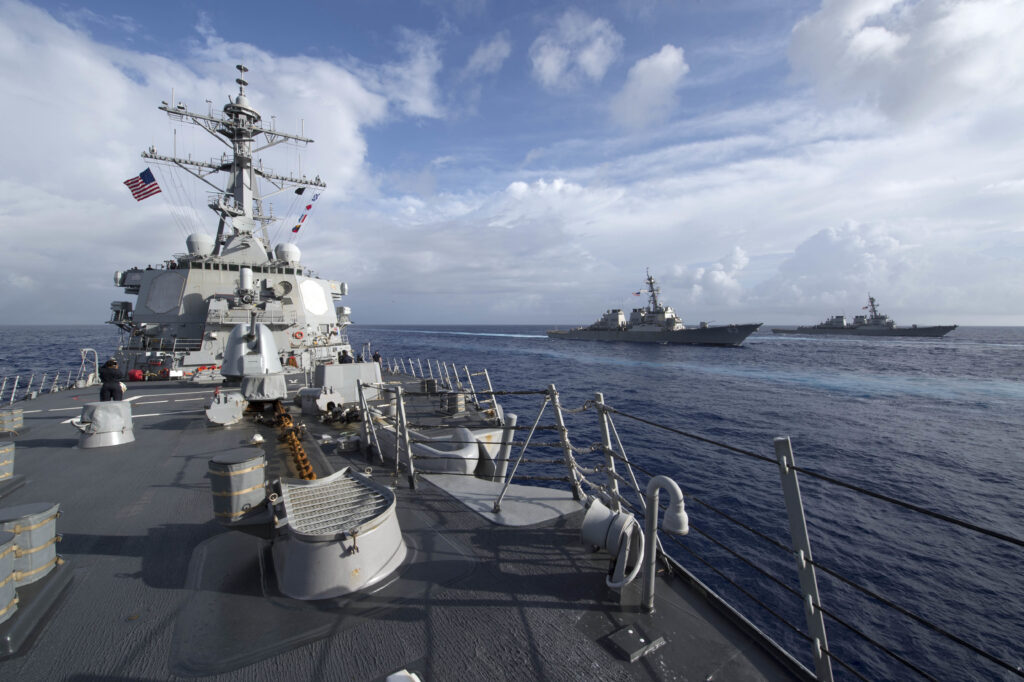 Source: U.S. Navy
Source: U.S. NavyThe Senate Appropriations Committee (SAC) has proposed adding $4.6 billion to the Navy’s shipbuilding budget for FY25, setting the stage for a conflict with House appropriators who recommended reducing shipbuilding funds earlier this year. The increase is part of a broader $21 billion plus-up for the Pentagon recommended by Senate appropriators.
The Senate committee’s recent version of the FY25 defense spending bill would allocate $37 billion for Navy shipbuilding, up from the original request of $32.4 billion. Nearly half of the added funding, approximately $2.1 billion, is earmarked as emergency spending. This designation is solely for accounting purposes to bypass mandatory spending limits imposed by the Fiscal Responsibility Act (FRA). Emergency spending is not subject to spending caps, creating a loophole that allows for increased spending without modifying FRA laws. Regardless of the approach, the Senate bill significantly diverges from the House bill, which proposed cutting Navy shipbuilding by $761 million for FY25.
The single largest shipbuilding increase in the Senate bill is $1.5 billion added for a third DDG 51 class destroyer in FY25, which was not included in the House markup. The legislation does not add a second submarine for FY25, which the House and Senate Armed Services Committees had previously recommended. The Navy initially planned to buy two submarines, but one was removed from the request. Despite support in the armed services committees, House and Senate appropriators have now agreed not to fund a second sub. However, the Senate would add $357 million to procure a second shipset of Virginia class submarine materials, as well as $1 billion to help complete construction of the two submarines funded in FY24. The committee states that additional Virginia class funding will help stabilize the submarine industrial base, which has been experiencing workforce and supply chain difficulties. Executives from General Dynamics Electric Boat and Huntington Ingalls, which jointly build the Virginia class, also indicated that a second shipset of materials would help maintain the supply chain if a second submarine doesn’t materialize in the final spending bill.
The Senate markup also adds $500 million in advance procurement for two LPD Flight II ships (LPD 34 and LPD 35), $195 million in advance procurement for the amphibious warship LHA 10, and $100 million to support the frigate industrial base. The bill also includes funding for three LCAC 100 Ship-to-Shore Connectors, which also appeared in the House markup, suggesting they will likely be included in the final conference agreement. However, the House Appropriations Committee (HAC) did not include the additional amphibious warship funding contained in the Senate bill. Instead, the House committee proposed adding advance procurement funding for T-AO 205 class oilers and $60 million for the Towing, Salvage, and Rescue Ship (ATS). The HAC also proposed removing the Marine Corps’ Landing Ship Medium from the FY25 budget, while Senate appropriators retained the LSM in their bill.
Another major area of contention between the House and Senate is the Constellation class frigate. The Navy requested a single frigate in FY25, which the House Appropriations Committee stripped from its bill. Senate appropriators, however, left the ship in place.
Shaun's deep-rooted interest in military equipment continues in his role as a senior defense analyst with a focus on the United States. He played an integral role in the development of Forecast International's U.S. Defense Budget Forecast, an interactive online product that tracks Pentagon acquisition programs throughout the congressional budget process. As editor of International Military Markets – North America, Shaun has cultivated a deep understanding of the vast defense markets in the United States and Canada. He is a regular contributor to Forecast International's Defense & Security Monitor blog and has co-authored white papers on global defense spending and various military programs.
image sources
- DDG 51 Arleigh Burke class destoyers: U.S. Navy




